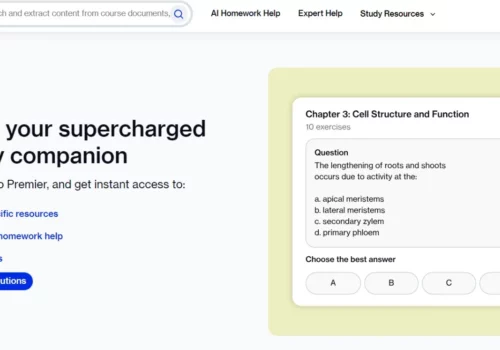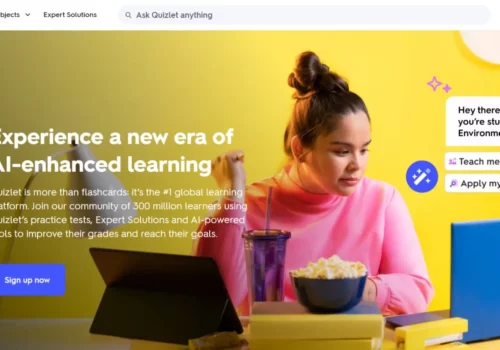As eLearning becomes more popular in corporate and educational settings, the variety of tools and methods available for creating them also proliferates. Here are some examples of how eLearning can be used to increase productivity and learning.
Despite the increasing popularity of eLearning, some people still harbor misconceptions about it. Some think that eLearning is all about sitting in front of a computer screen watching videos, or that it’s nothing more than a digital version of a face-to-face course. In this blog post, we’ll explore some different types of eLearning and dispel these myths.
We’ll also look at examples of how businesses are using eLearning to improve employee productivity and training.
When it comes to e-learning, there are endless possibilities for what you can create. Whether you’re looking for ways to improve your training programs or develop new ones, these examples will give you a good starting point. Each of these examples is well executed and engaging, making them perfect for any audience.
Examples-of-E-Learning-
- E-learning can help employees stay up-to-date on industry trends and changes.
- E-learning can be used to provide employees with specific training on new software or processes.
- E-learning can be used to assess employee knowledge and skills.
- E-learning can help reduce the need for travel and associated costs.
- E-learning can help create a more flexible workplace environment.
E-learning can help employees stay up-to-date on industry trends and changes.
The ever-changing nature of the business world means that employees need to be constantly learning new things just to keep up. This can be a challenge, especially for busy adults who already have a full-time job and other commitments. E-learning can help by providing employees with easily accessible, bite-sized chunks of information that they can consume at their own pace.
E-learning can be used to provide employees with specific training on new software or processes.
When a company implements new software or changes its processes, employees need to be trained on how to use the new system or follow the new procedures. E-learning can be an effective and efficient way to provide this training, since it can be done remotely and at the employees’ convenience.
E-learning can be used to assess employee knowledge and skills.
E-learning can be used not just for training employees, but also for assessing their knowledge and skills. This is especially useful for companies that need to ensure that their employees are up to date on the latest industry trends and changes. By administering quizzes or tests online, employers can get a quick and accurate sense of what their employees know (or don’t know).
E-learning can help reduce the need for travel and associated costs.
Traditional classroom-based learning often requires employees to travel to a central location, which can be time-consuming and expensive. E-learning eliminates the need for travel, since employees can access the training materials from anywhere with an internet connection. This can be a huge cost savings for companies, especially if they have employees in multiple locations.
E-learning can help create a more flexible workplace environment.
E-learning can help create a more flexible workplace environment in two ways. First, since employees can access the training materials from anywhere, they can learn at their own pace and on their own schedule. This can be a huge benefit for employees who have busy schedules or who need to balance work with other commitments. Second, e-learning can help create a more flexible workplace environment by allowing employees to learn from any location. This can be especially beneficial for employees who work remotely or who travel frequently.
E-learning has a lot of potential benefits for both employees and employers. By taking advantage of the flexibility and convenience of e-learning, companies can save time and money while still providing their employees with the training they need to be successful.
Some more e-learning examples-
Airbus saving millions of pounds with e-learning
Airbus is one of the world’s leading aircraft manufacturers, with a turnover of more than £30 billion. The company employs around 140,000 people across its global operations.
Airbus has been using e-learning to train its employees for over 10 years and has seen significant benefits as a result. The company has saved millions of pounds in training costs, and has seen improved employee retention and satisfaction rates.
E-learning has enabled Airbus to provide its employees with flexible, on-demand training that can be accessed from anywhere in the world. The company has also been able to create bespoke training courses that are specific to its needs.
Airbus is just one example of a company that is using e-learning to its advantage. With the right platform in place, your business can too.
“Nano-Degrees” or “Micro-Credentials”
The debate between nano-degrees and micro-credentials is one that has been going on for some time now. There are pros and cons to both, and it can be hard to decide which is right for you. Here’s a look at the differences between the two:
Nano-degrees are typically shorter and more focused than traditional degrees. They can be completed in as little as a few months, and often focus on specific skills or knowledge areas. This makes them ideal for students who want to upskill quickly, or for working professionals who need to update their skills for their current job.
Micro-credentials, on the other hand, are often more flexible and can be tailored to the individual. They also tend to be less expensive than nano-degrees, and can be completed in a shorter time frame. This makes them ideal for students who want to gain specific skills without committing to a full degree program.
Interactive Elearning Virtual Workshops-
Interactive Elearning Virtual Workshops are the perfect way to learn more about various aspects of elearning while still being able to interact with other participants. These workshops allow you to not only get valuable information but also to network with others who may be interested in the same topics.
There are a variety of interactive elearning virtual workshop topics that are available. One popular topic is how to use elearning in the classroom. This workshop will help teachers learn about the different ways that they can use elearning in their classrooms and how to make the most out of this technology. Other popular topics include using elearning for professional development, creating engaging content, and using elearning in corporate training.
If you are looking for an interactive elearning virtual workshop, then you should check out the many different options that are available online. There are many reputable companies that offer these workshops, so you will be able to find one that fits your needs and budget. You can also read reviews of different companies to see what others have to say about their experience with their services. With a little bit of research, you should be able to find an interactive elearning virtual workshop that is perfect for you and your needs.
Conclusion- e-learning Examples to Enhance Learner Engagement
In conclusion, e-learning is a powerful tool that can be used in many different ways to improve employee productivity and satisfaction. It has been shown to reduce training costs and increase knowledge retention. There are many different types of e-learning tools available, so it is important to select the right one for your needs. We hope this article has given you some ideas about how e-learning can be used in your organization.



